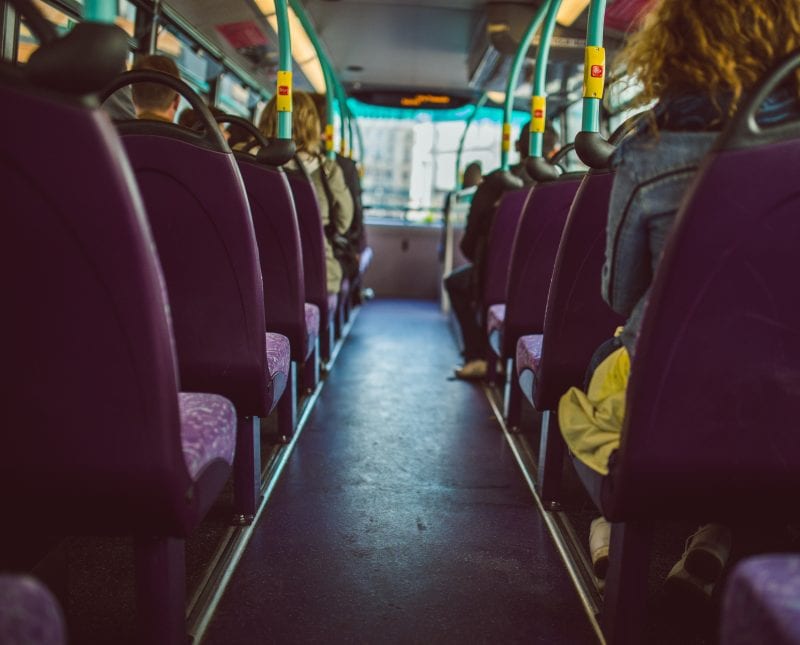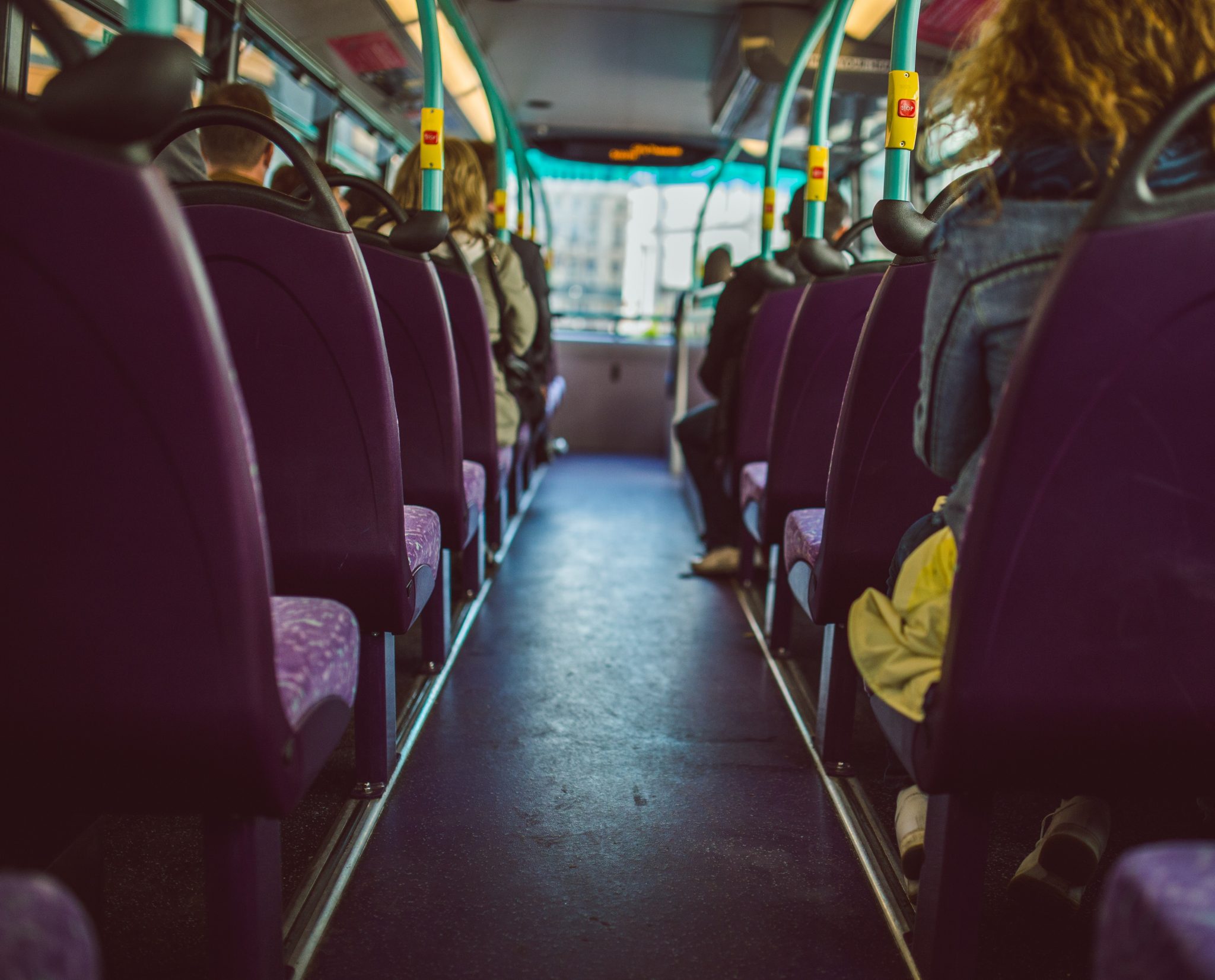

March 26, 2018 | Article by Courtney Christl (Spring 2018 Intern)
I started my internship with Lightning 100 this semester, so I decided in early January that I would learn how to take the bus in order to save on gas. Fun fact: riding the bus in Nashville is FREE with a Lipscomb ID! Also as a sustainability major, I figured I should be aligning my behavior with my values anyways, so riding the bus simply made sense for me.
So I started January by taking the bus every other day to my internship at the Lightning 100 office. The first few days were disastrous, as is any experience when learning something new. I missed the bus dozens of times, my phone died a few of those times, and I definitely panicked because I wasn’t sure how I would get home when I was 10 miles away in an unfamiliar area. But I persisted, and eventually taking the bus became just another way to get somewhere.
Then, at the end of February, my car broke down. I didn’t have the funds available to repair it, nor was the car valuable enough to even warrant the cost of repairs. The junkyard gave me a whopping $150 to take it off my hands, and since then, I’ve been completely car-less in Nashville.
I have mixed feelings about being dependent on the Nashville bus system—the experience has been simultaneously exciting, stressful, boring, and relaxing.
Here’s how I’ve learned to survive my month of taking the bus everywhere in metro Nashville:
- I use Google Maps to plan my trips. I have absolutely no clue what the bus routes are, and I’m not sure how some folks know them all by heart. Luckily, I don’t really need to know. I GPS the routes every single time, even if I’m taking the exact same bus at the exact same time to my internship. The reason for that is Google Maps has amazing features for bus routes. I can select a date and time to depart or arrive at a location. I can select the suggested best route, routes with fewer bus transfers, or routes with less walking. I can turn on reminders to leave on time or reminders to transfer. I can see if the bus is on time, early, or late (although I recommend always planning to arrive at the stop a little early, as bus drivers are typically trying to get back on schedule even if they’re running 10+ minutes late). I can also switch easily between a bus route and a walking route if I need to. Several other apps have been recommended to me, but Google Maps is the most user-friendly one with the best features.
- I always wave at the bus driver. I do this for two reasons: first, sometimes the driver will accidentally blow right by your stop if you don’t get their attention, and second, to be nice. The drivers deserve a little love.
- I walk instead of waiting forever at the bus stop. Sometimes, transferring between buses can be a long wait. There have been days when I stepped off one bus and had to wait 45 minutes at a stop for the next bus to arrive. I’ve learned, instead of sitting for 45 minutes, to make that time productive by walking. I’ll check the map to see the route my next bus will be taking, and I’ll walk along that route to meet the bus at a stop a few blocks ahead. This doesn’t put me at my destination any earlier, but it makes the time between buses pass much faster, and I get in a little exercise rather than sitting at the stop and letting my impatience fester. Often I’ll be enjoying the walk so much that I end up just walking the rest of the way to my destination (and at times, walking 30 minutes can be faster than waiting 45 minutes for a 10-minute bus ride).
- I bring a backpack or big purse everywhere. Only after I had to go without one did I realize that cars are like personal portable storage facilities. Taking the bus means I don’t have that extra storage space in my car to leave a water bottle, extra hair products, a sweatshirt, snacks, deodorant, a phone charger, tissues, or anything else I might need. Now, wherever I go, I can only bring the essentials, which teaches me to practice minimalism. However, I don’t have to sacrifice everything—I bring a decent sized bag with me when I go out so I can stay prepared.
- I ready myself for any type of weather. I nearly always have my travel umbrella, a pair of winter gloves, and a jacket with me just in case. We all know the Nashville weather can be unpredictable, and when taking the bus, we are especially vulnerable to whatever that weather may be. If it’s 20 degrees outside, I can’t just rush from a heated building to my heated car—I may have to wait or walk in the cold for 15-20 minutes. Being vulnerable to the weather can sometimes be the worst if I’m not dressed for it, but it also strangely makes me feel more in touch with nature. It reminds me I don’t have to control the temperature to be perfectly comfortable; I can still survive in the cold or rain and even enjoy it too!
- I remind myself of all the benefits of taking the bus over driving a car in Nashville. Riding the bus in Nashville is slow. Truly. It takes an hour to get somewhere that would normally be a 20-minute drive. But in those 40 extra minutes, I get to walk around and explore new places, spend time outside, listen to music, smile at people, and slow myself down. Driving in Nashville traffic makes me a nervous wreck—I haven’t had to drive anywhere in this city in months, and I am definitely a happier, more relaxed person because of it. I also get to enjoy the benefits of knowing that I’m not contributing to greenhouse gas emissions by driving a car around every day. Finally, another reason I take the bus is that I get to meet and be around people who are different from me.
The Nashville metro transportation system is not perfect, but it works well enough if you can plan ahead. From my firsthand experience, I definitely support updates to the transit system to make it faster and more efficient, but even as it is now I recommend that anyone try it out at least a few times—you just might love it!

